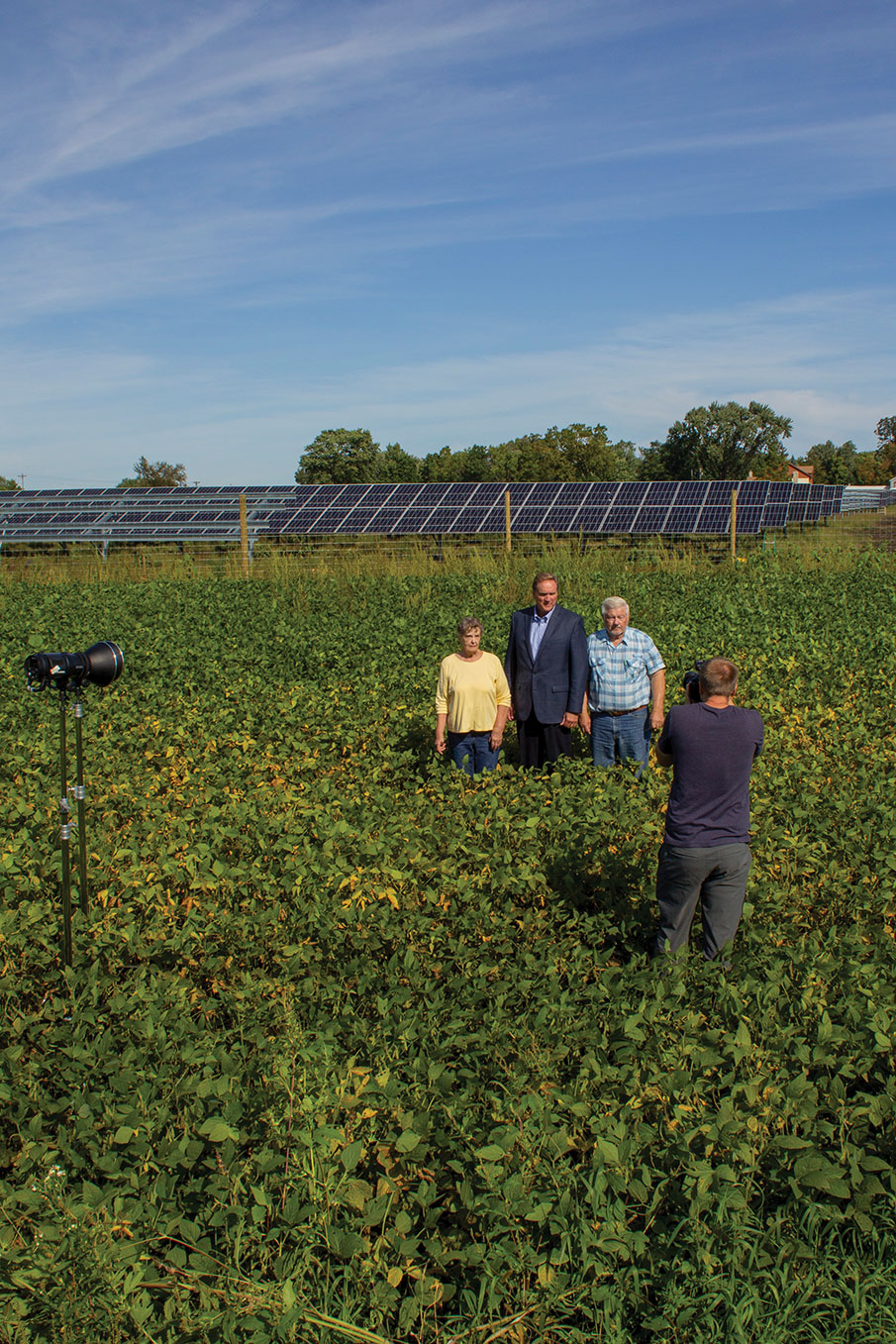Wall Street Journal features Dakota Electric members
South of Farmington sits 15 acres of farmland producing enough energy to power around 600 homes. The land, owned by Dakota Electric members Dick and Jane Nielsen, will deliver more than 5 million kilowatt-hours of energy each year to members of Dakota Electric.
About 10 years ago, Dakota Electric started looking at ways to provide more renewable energy for its membership. At the same time, interest in solar power grew and net farm income dropped, leaving farmers searching for alternative revenue streams.
Farmers leasing their land to generate energy revenue is what brought a reporter from the Wall Street Journal to feature the Nielsens in the Sept. 23 article, “Struggling Farmers See Bright Spot in Solar.” The journalist, Kirk Maltais, contacted St. Paul nonprofit Fresh Energy to learn more about rural solar projects.
The article features an in-depth look at why the couple leased their land for the solar panels, as well as a few photos of the Nielsens at the solar site.
Dakota Electric CEO Greg Miller is proud to see the Nielsens featured and believes that Dakota Solar 4 is mutually beneficial.
“We work hard to ensure that each project we build is in the best interest of our members and the cooperative,” Miller stated. “The new solar site is a win-win for all involved.”
Dakota Solar 4 is the largest solar project Dakota Electric has commissioned, with over 10,300 panels that will produce more than 5 million kWhs of power annually. This is in addition to our wholesale power supplier Great River Energy’s commitment to achieve 50% renewable energy in our fuel sources portfolio by 2030.
Dakota Electric worked with Great River Energy and ENGIE (formerly SoCore Energy) to construct the three-megawatt solar project on the Nielsen’s land.
ENGIE owns the solar facility on behalf of Great River Energy. Through a power purchase contract with Great River Energy, Dakota Electric purchases all the solar output for delivery to its member-owners. The project is planned to be commercially operating in early 2020.
Like the first two solar projects near Hastings and Randolph, Dakota Solar 4 will be planted with pollinator-friendly native flowers and grasses. In a couple years, the habitat will generate an abundance of healthy food for bees and other insects, providing critical services to our food and agriculture system.
Dakota Electric’s four solar projects combined will deliver more than 9 million kWhs of solar energy annually to Dakota Electric members — enough energy to power approximately 1,100 homes.



